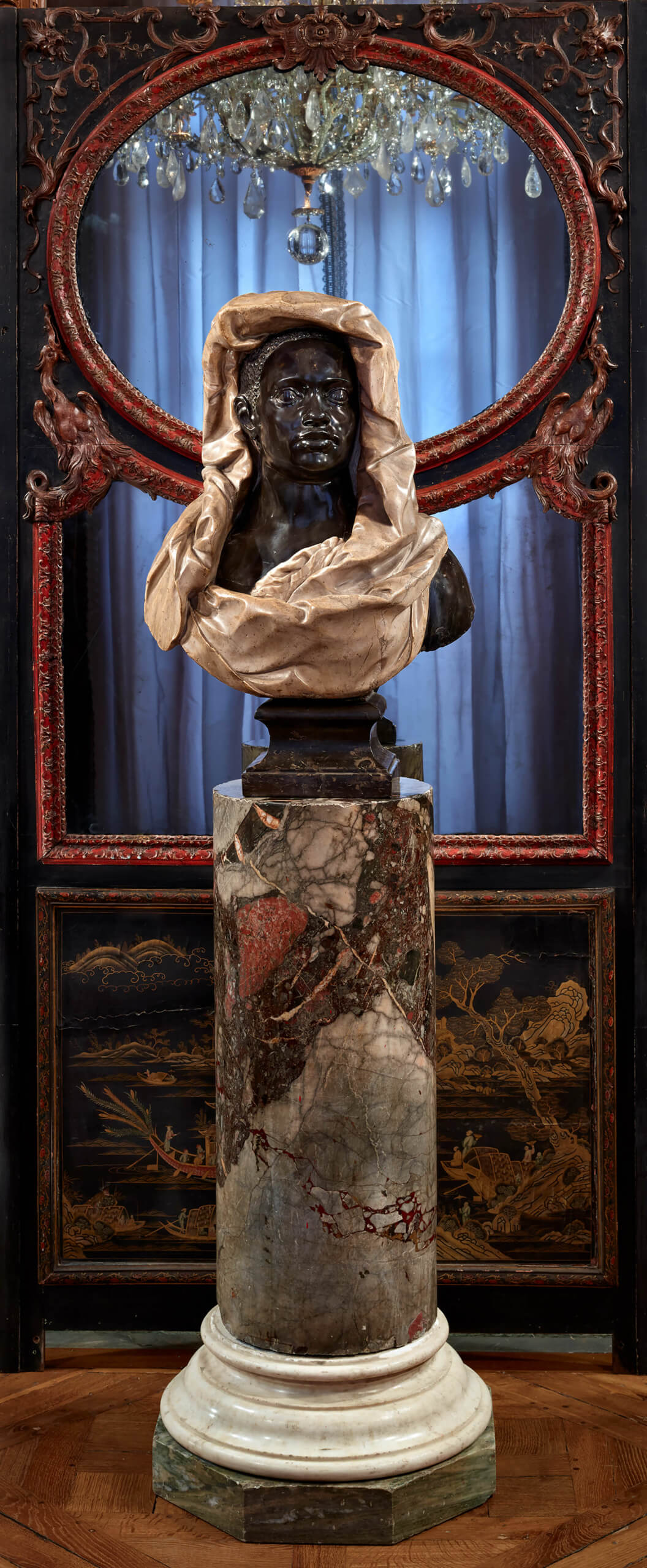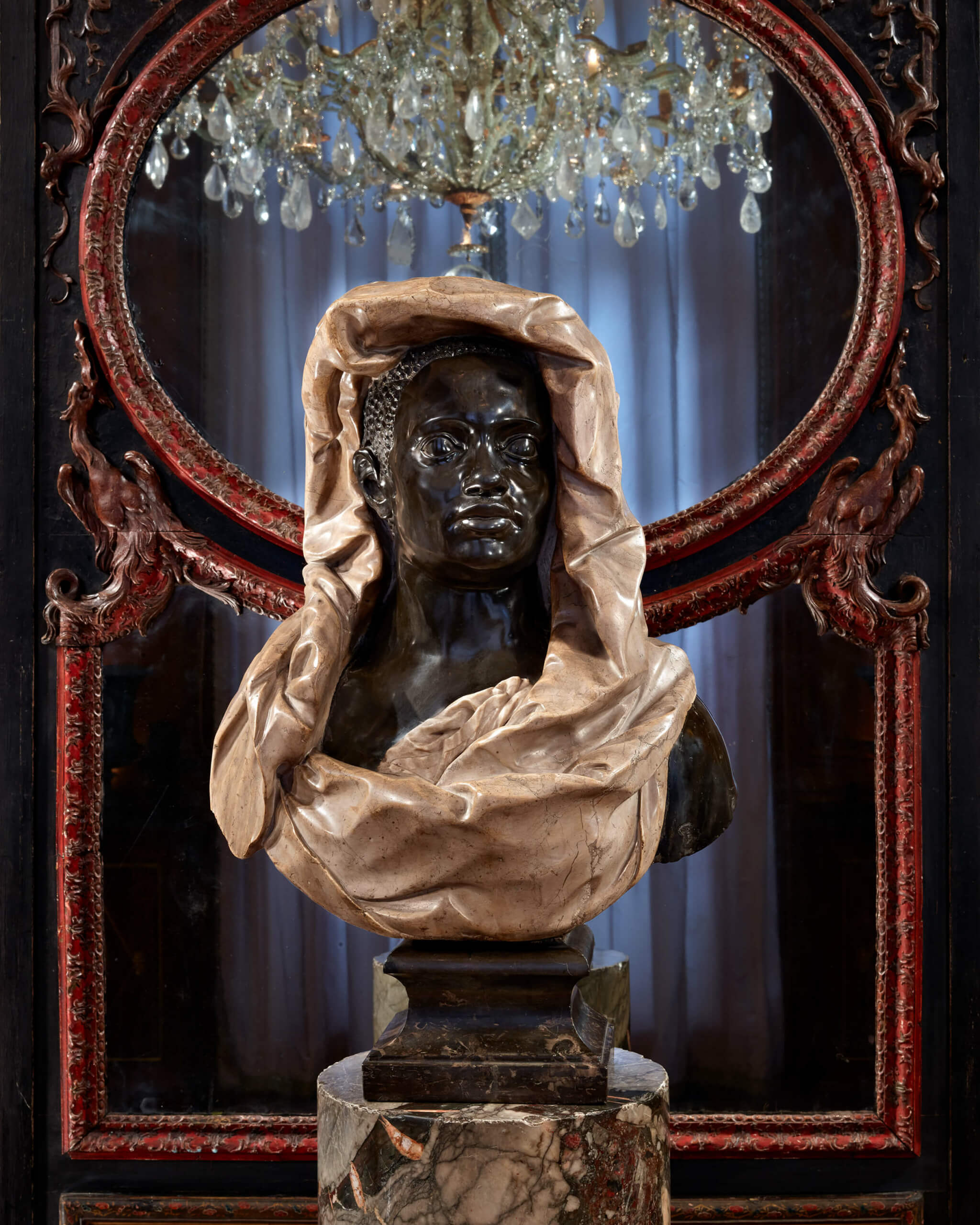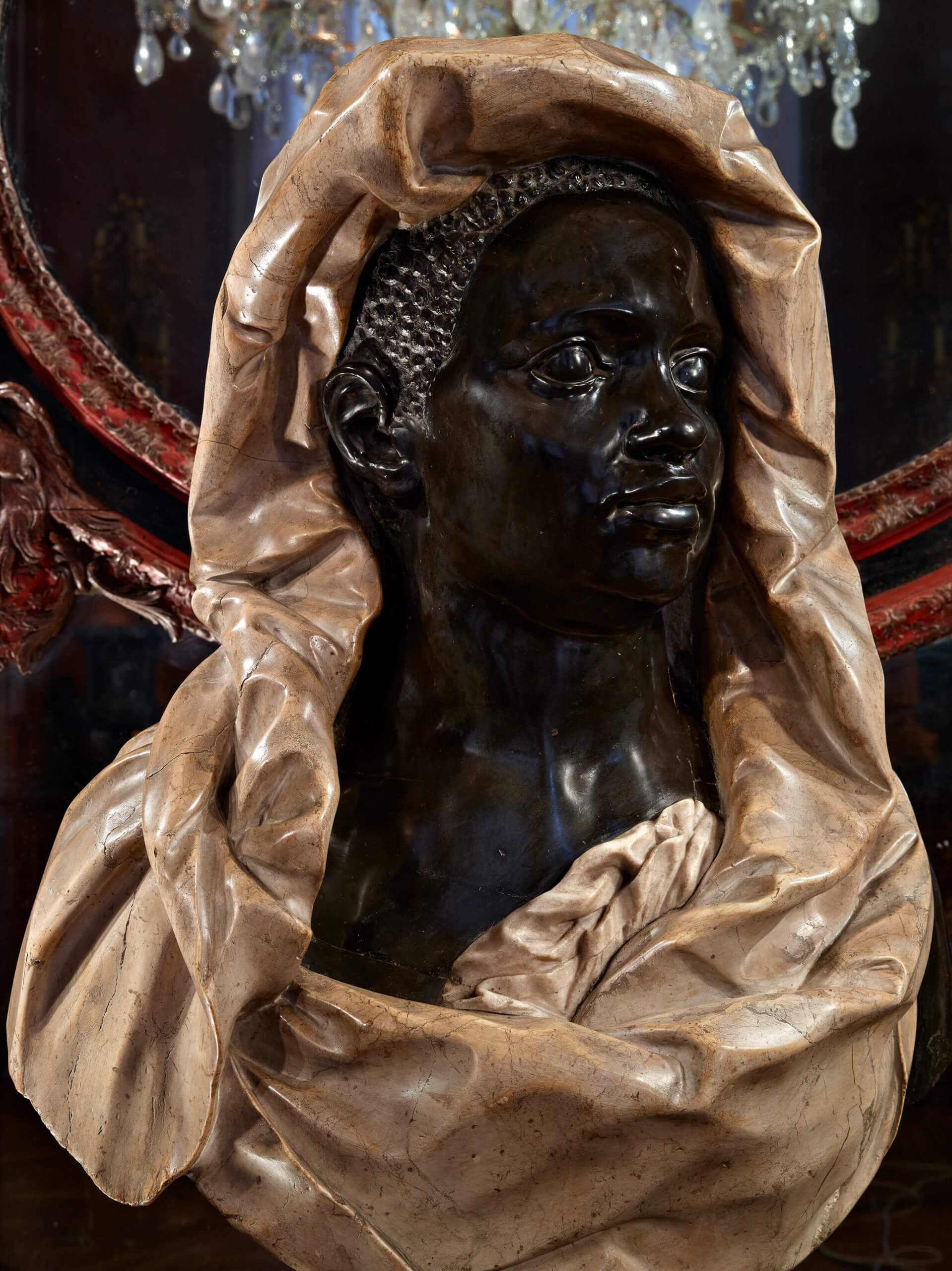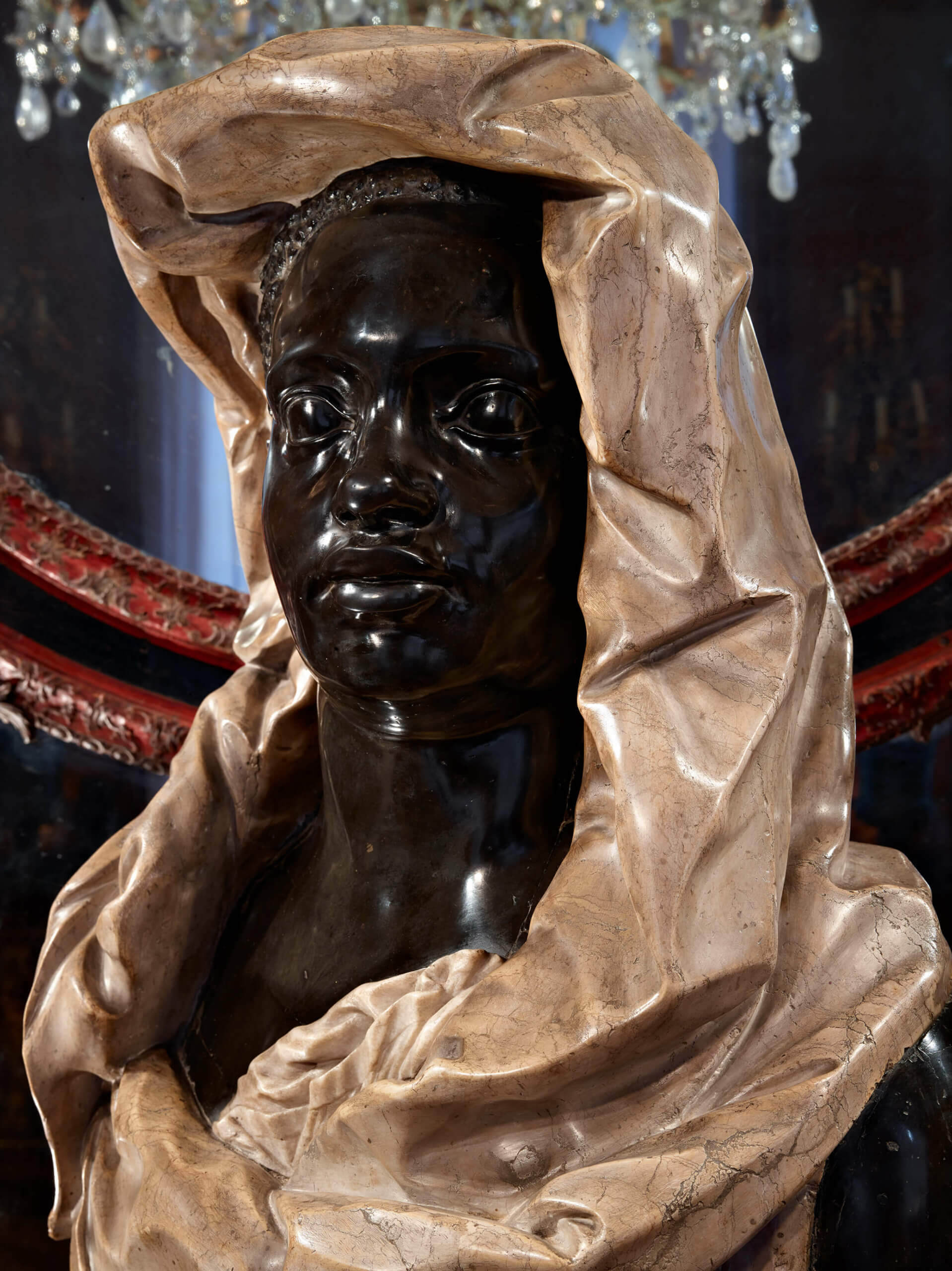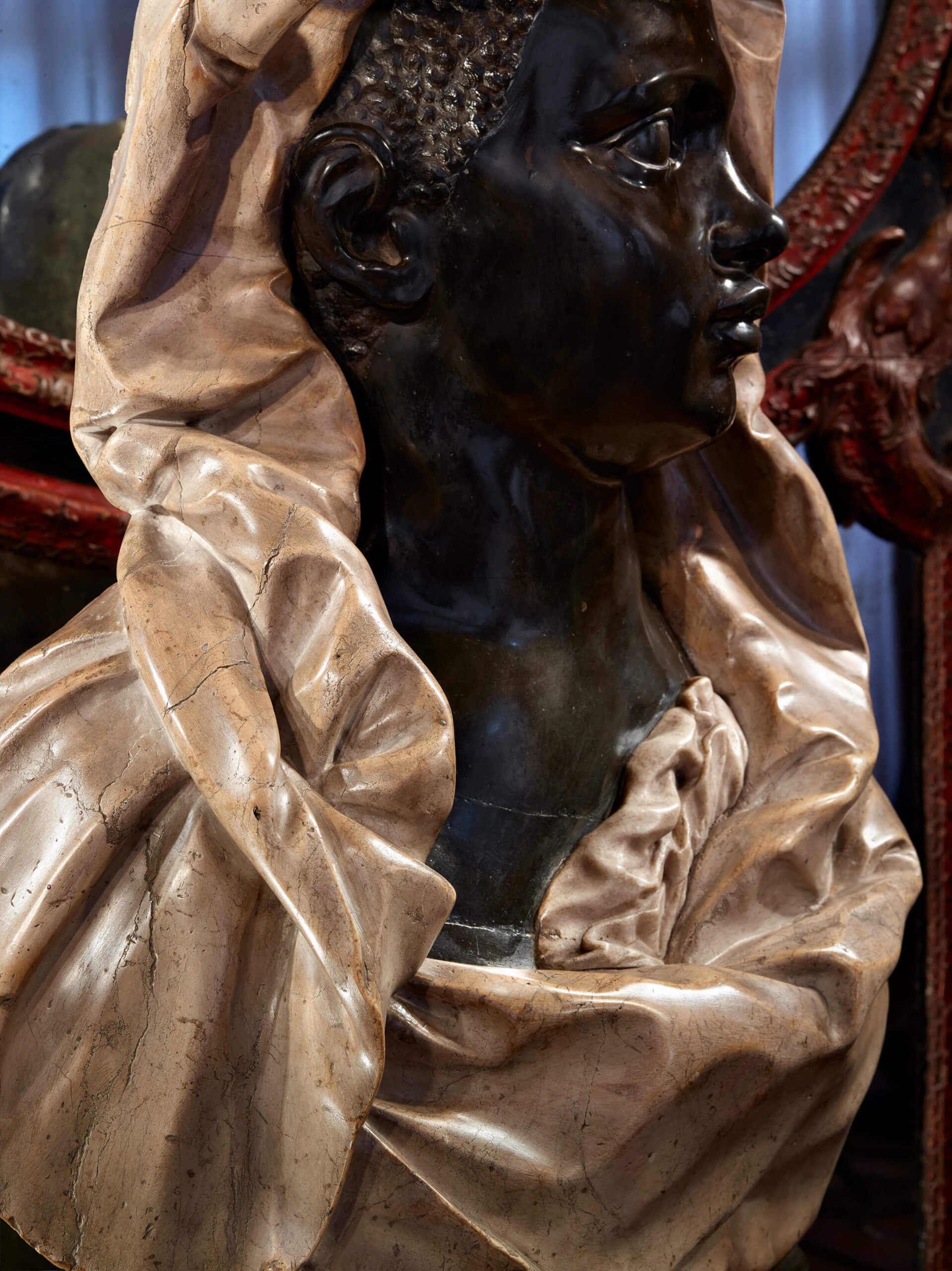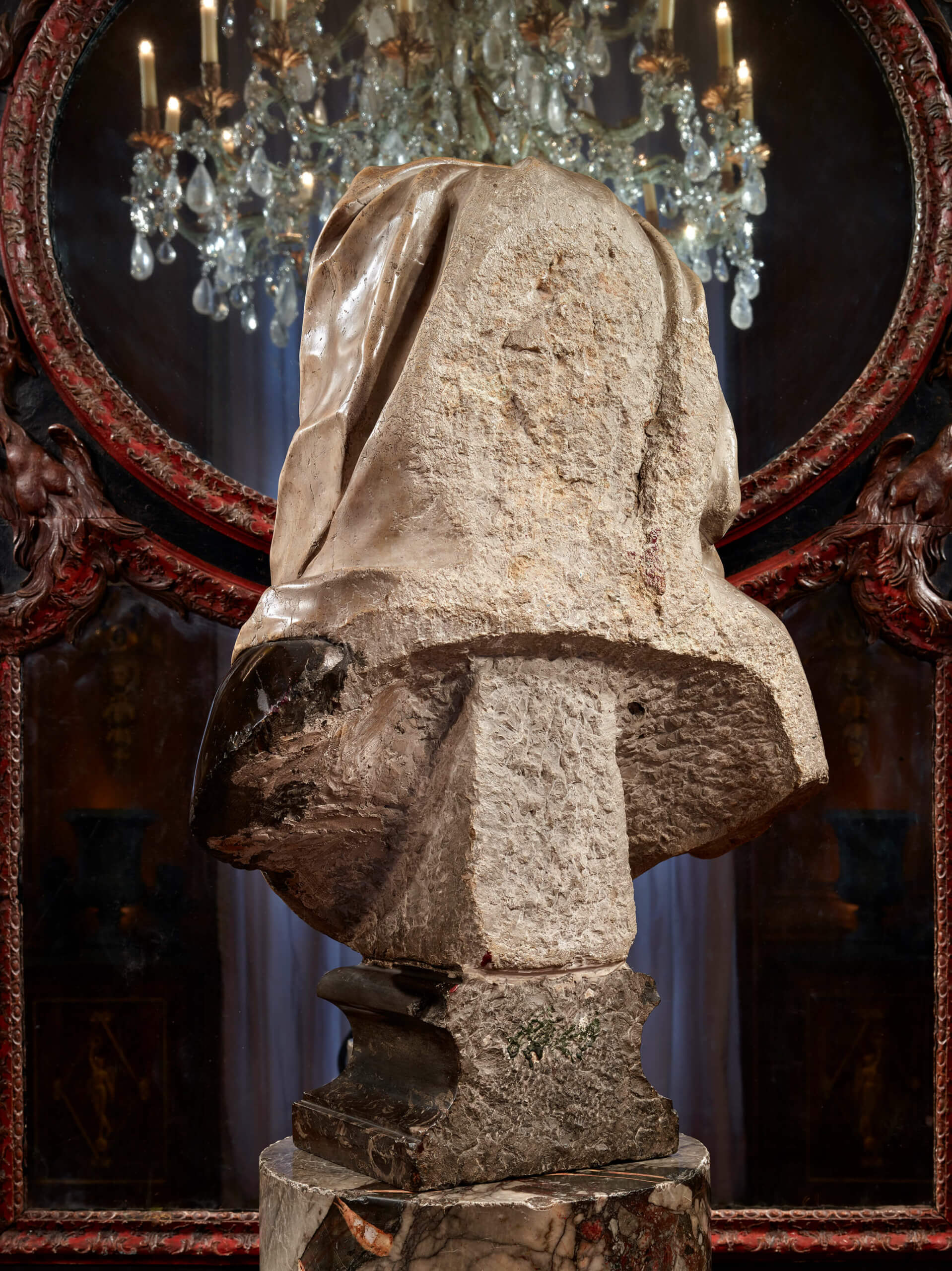

Paragone di Fiandra (bust); Rosso di Malcesine and white marbre (drape); Lumachella nera (base).
H. 78 cm. (30 ¾ in.).
PROVENANCE: private collection.
COMPARATIVE LITERATURE: Sylvia Pressouyre, Nicolas Cordier – recherches sur la sculpture à Rome autour de 1600, Rome, Ecole française, 1984, p. 413-415, cat. 21, ill. 190-198 ; Christian Theuerkauff, “Anmerkungen zu Melchior Barthel,” Zeitschrift des Deutschen Vereins fur Kunstwissen – Band XLI – Heft 1/4, Berlin, 1987, p. 71-117; Rosario Coppel Aréizaga, Museo del Prado – Catálogo de la Escultura de Época Moderna – Siglos XVI-XVIII, Madrid, 1998, cat. 26 ; Andrea Bacchi, La Scultura a Venezia da Sansovino a Canova, Milan, 2000, p. 692-694, ill. 226 ; Andrea Bacchi, ed., Scultura del ‘600 a Roma, Milan, 2000, p. 792-793, ill. 271 ; Paul H. D. Kaplan, “Italy, 1490-1700”, The Image of the Black in Western Art: From the “Age of Discovery” to the Age of Abolition: Artists to the Renaissance and Baroque, III, part I, Cambridge, Harvard University Press, 2010.
Born in Dresden on December 10, 1625, Melchior Barthel was considered one of the greatest German court sculptors in the 17th century. First trained circa 1638-1640 in the workshop of his father, Hieronymus Barthel; when the latter died an untimely death he completed his apprenticeship in the workshop of the sculptor Johannes Böhme in Schneeberg, a town located in Saxony, where he remained for five years. Melchior Barthel discovered Italy in 1651, staying first in Rome until 1654 where he was deeply marked and influenced by the art of Gian Lorenzo Bernini, also known as the Bernini, and moving afterwards to Venice where he stayed seventeen years or so and produced the most important part of his works. The sculptor returned to Dresden in 1670. Thanks to the intervention of the architect Wolf Caspar von Klengel (1630-1691), he was appointed sculptor to the Court of Saxony by Johann Georg II (1613-1680), Elector of Saxony, Count Palatine of Saxony and Margrave of Meissen since 1656.
